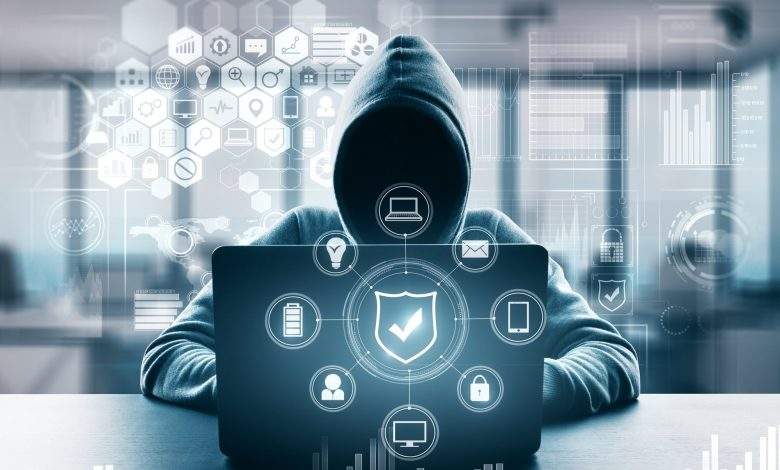
The Era of Digitization and Increased Online Cyber Attacks
Modern-day technological advancements and the sudden shift towards digitization have significantly impacted the business sector. The major transformation of the conventional business processes to digital has created an online space that has hugely facilitated not only the businesses but the criminals as well. That being said, cyber-attacks have increased considerably in the past few years mainly because of digitization, in small to medium-size businesses, especially. As per Accenture’s Cost of Cybercrime Study, nearly 43% of the cyber attacks were aimed at small businesses. KYC verification and cybercrime; a broad term consisting of embezzlement, theft, and data hacking, has grown dramatically by around 600% due to the COVID pandemic.
Most Common Cyber Attacks
The most common cyber attacks experienced by businesses include:
- Malware: The go-to tactic of the criminals with which they infect the user’s system with malicious software. As soon as the user clicks on the infected link, the malware is activated and it could cause adverse effects i.e. installation of additional malicious software, making the systems inoperable, and blocking access to the other networks.
- Denial of Service (DOS): Many businesses have reported being a victim of DOS, a cyber attack that floods the user’s system with unsolicited requests, refraining from responding to the requests. The cybercriminals avail the time in which the system gets disabled, to launch other attacks.
- Man in the Middle (MITM): This particular technique is used by cybercriminals to interrupt a two-party transaction and steal sensitive information. As soon as they detect that the visitor is using an unsecured public wifi network to conduct a transaction, they intervene as the third party and steal the information by installing malware.
- Phishing Attacks: Yet another got-to scam of the cybercriminals is the phishing attacks. It involves the use of fake information to trick the user into giving in his personal or financial information. This attack is backed up by the goal of accessing the user’s banking details and installing malware on his device.
Cybercrime in Small to Medium Business Enterprise (SMEs)
Although every business sector has been adversely affected by cybercriminals, SMEs have been observed to suffer the most. The sudden shift towards digitization has made the cyberattacks on small businesses more frequent and complex. According to a study, the rate at which small to medium businesses are being exploited by cybercriminals is far more than the rate at which they are adopting measures to defend themselves. The intensity of the cyber attacks could be so severe that along with disrupting the normal business operations, it could severely damage the IT assets as well.
As per Ponemon Institute’s State of Cybersecurity Report, a survey generated the results that according to 45% of the SMEs, the cybersecurity processes are not strong enough to fight the criminals and prove ineffective in this regard. Moreover, they claimed that among the multiple forms of cyber attacks, around 57% were phishing and social engineering and nearly 30% were credential theft.
Cyber Attack Cases Worldwide
Considering the rapidly increasing rate of cyber attacks, the following are the most prominent incidents experienced in this regard:
- Yahoo: The news broke back in 2013, when the renowned website, Yahoo fell prey to the cybercriminals’ disruptive strategies. Although the incident took place in 2013, it only came forward when the company was being acquired by Verizon in 2016. The account information of around 3 billion users was accessed by hackers, leading to a massive breach of data information.
- Alibaba: Alibaba encountered a similar situation where a developer working for an affiliate marketer, stole customer data that included their usernames and mobile numbers from the company’s website. It later came forward that the information was not to be sold on the dark web but to be used by the developer and his employer, but they still got imprisoned for the act for 3 years.
- LinkedIn: June 2021 witnessed a huge loss for LinkedIn when the company found out about a mass data breach by hackers. Turns out, data of around 700 million of its users were listed on the dark web, affecting about 90% of its user base. Further investigation of the matter deduced that the hacker had adopted data scraping tactics by exploiting the website’s API. Intending to protect its reputation, LinkedIn claimed that no personal information of the users was breached but that still violated their terms of service.
- Facebook: In April 2019, around 533 million users’ personal information had been made available on the public internet that including their phone numbers, account names, and Facebook IDs. This particular happened as a result of the revelation of two major data sets from Facebook apps. However, in 2021, the real intention came forth when the data was posted for free.
DIGITALIZATION’S Influence ON CYBERSECURITY:
Attackers are getting increasingly interested in the banking and financial industries. Following previous assaults on financial institutions and the mass transfer of online banking services during the quarantine period, an increasing number of experts think that cyber dangers are becoming increasingly important to banks and financial services’ financial soundness.
The status of the hacker is being bolstered by recent advancements in artificial intelligence. AI has the potential to both enhance and exacerbate people’s lives. In the hands of hackers, such advancements aid cyberattacks by speeding up the detection of weaknesses and defining the assault path.
Another factor to consider is that Fintech firms must continually expand their investments in the creation, support, and modification of new digital platforms and processes since this necessitates perpetual technical progress.
Critical business choices will be driven by cybersecurity:
Business goals are influenced by business markets, which are influenced by IT solutions and technology. Today, protecting data and sensitive information is a corporate must rather than a best practice. Businesses will be negatively impacted by any cyber-attack or data loss. As a result, cyber security must be integrated into vendor operations, procedures, and customer connections.
Conclusions:
Staying ahead of the cyber-threat management curve is critical for organizations to guarantee a solid asset management strategy and resilience against cyber threats, as well as to create economic value. Because businesses are no longer constrained by their four walls, an integrated strategy to cyber security that encompasses both on-premise and clouds IT assets is essential.



